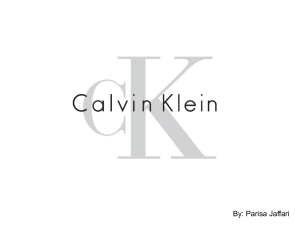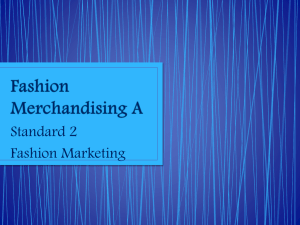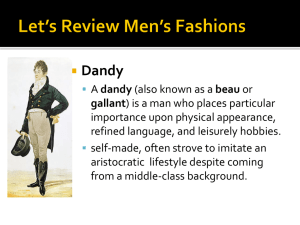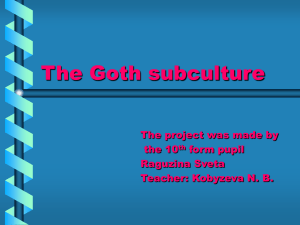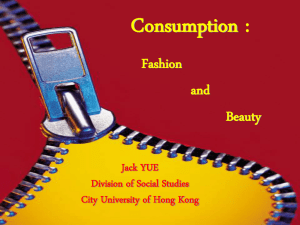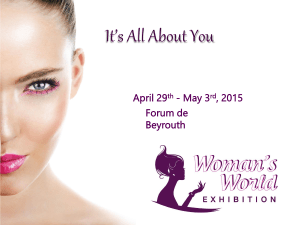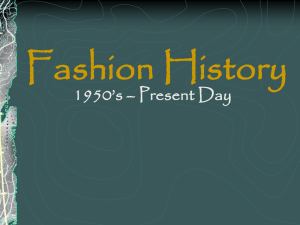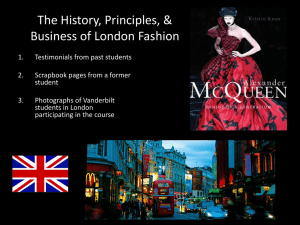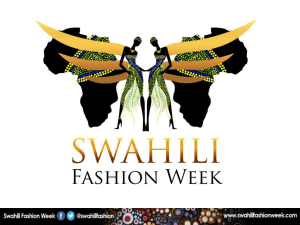British Invasion
advertisement
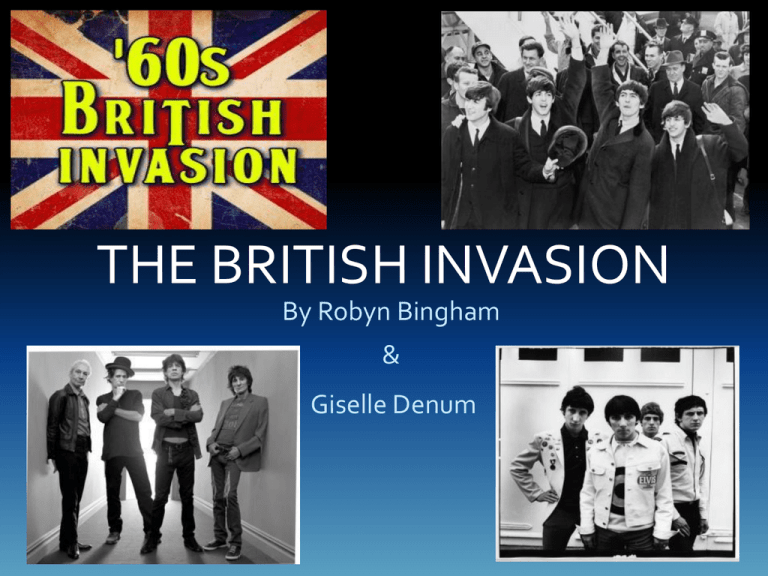
THE BRITISH INVASION By Robyn Bingham & Giselle Denum Quotes that describe the British Invasion • The mod fashion had "narcissistic and fastidious [fashion] tendencies" – Unknown • The concept of mod can be difficult to pin down, because throughout the subculture's original era, it was "prone to continuous reinvention." –Paul Jobling and David Crowley • The mod subculture is a “fashion- obsessed and hedonistic cult of the hyper-cool” - Paul Jobling and David Crowley What is the British Invasion and how did it begin? • The British Invasion was a phenomenon that occurred in the mid-1960’s when rock and pop music acts from the UK, as well as other aspects of British culture, became popular in the US, and then throughout the world. • The British Invasion was influenced by Swinging London, a catch-all term applied to the fashion and cultural scene that dominated London in the 1960s. It was the arrival of the Beatles in the United States and their appearance on the Ed Sullivan Show which marked the start of the British Invasion in the US. Fashion Trends that occurred during the British Invasion • The dominant fashion style was the “mod”, which is a term that derives from modernist. It is a subculture that originated in London in the late 50’s. The fashion was a symbol of youth culture Significant elements of the mod subculture include fashion (often tailormade suits) Popular in North America Description of garment parts for Men • Male mods adopted a smooth, sophisticated look that emphasized tailormade Italian suits with narrow lapels, mohair clothes, thin ties, buttondown collar shirts, wool or cashmere jumpers, and pointed-toe leather shoes that were nicknamed winklepickers • They wore Chelsea or Beatle boots, Tassel Loafers, Clarks Desert Boots and Bowling shoes • The Hairstyles of the British Invasion imitated the look of the French Nouvelle Vague cinema actors of the era, such as Jean-Paul Belmondo. • Some male mods went against what was perceived as the gender norm of the era by enhancing their appearance with eye shadow, eye pencil or even lipstick. • Scootering (which become more popular than motorcycling) led to the wearing of military parkas to protect costly suits and trousers from mud and rain. Description of garment parts for Women • Female mods dressed androgynously, with short haircuts, men's trousers or shirts, flat shoes, and little makeup — often wearing only pale foundation, brown eye shadow, white or pale lipstick and false eyelashes. • Female mods pushed the boundaries of parental tolerance with their miniskirts, which got progressively shorter between the early and mid-1960s. What colours and designs were popular? • US teens and young adults started to dress "hipper". The evolution of the styles of the British Invasion bands was seen, as some bands went from a cleaner cut to being more hippie. • While the people of the subculture were very consumerist and shopping minded, mods were not passive consumers; instead they were very self-conscious and critical, customizing "existing styles, symbols and artifacts" such as the Union Jack and the Royal Air Force roundel, putting them on their jackets in a pop art-style, and putting their personal signatures on their style How did the clothing communicate the wearer’s social status, occupation or role? • Working class mods, the subculture's focus on fashion and music was a release from the dullness of daily their jobs. • “Ancient elegance and new opulence are all tangled up in a dazzling blur of op and pop” -Piri Halasz’ description of Swinging London in the 1966 “Time”magazine Who were the fashion Icons and Designers? • During the time of Swinging London, fashion and photography were featured in Queen magazine, which drew attention to fashion designer Mary Quant. • The model Jean Shrimpton was another icon and one of the world's first supermodels. She was the world's highest paid and most photographed model during this time. Shrimpton was called "The Face of the '60s", in which she has been considered by many as "the symbol of Swinging London" and the "embodiment of the 1960s". • Other popular models of the era included Veruschka, Peggy Moffitt, and Penelope Tree. Who were the fashion Icons and Designers? • The model Twiggy has been called "the face of 1966" and "the Queen of Mod.” • As female mod fashion went from an underground style to a more commercialized fashion, slender models like Jean Shrimpton and Twiggy began to exemplify the high-fashion mod look. • Women were lured to King’s Road, where Mary Quant’s radical miniskirts were sold at her iconic store,Bazaar. • (The Teddy Boys paved the way for making male interest in fashion socially acceptable, because prior to the Teddy Boys, male interest in fashion in Britain was mostly associated with the underground homosexual subculture's flamboyant dressing style.) • The Teddy Boys are a subculture How did Music and popular culture influence fashion? What movies are representative of the British Invasion? • The Beatles- Fashion and image differentiated the Beatles out from their earlier US rock and roll counterparts. Their distinctive, uniform style "challenged the clothing style of conventional US males", just as their music challenged the earlier conventions of the rock and roll genre. How did Music and Popular Culture influence fashion? What movies are representative of the British Invasion? AUSTIN POWERS YouTube Clip: http://www.youtube.com/watch?v= MvE5NHLhtls THE BEATLES THE ROLLING STONES As well as other bands such as The Who, The Kinks, The Animals, Gerry and the Peacemakers and many others What clothing parallels can be made to other time periods? • The Mini Skirt: Similar to the 1920’s when Women’s skirts first began to get shorter in length, during the British Invasion skirts shortened even further to become Mini skirts, pushing many boundaries. • Women wearing Men’s clothes: During the 1920’s women’s movement, women were dressing less feminine and during the British Invasion women began to wear men’s shirts and trousers also mimicking a more masculine look What significant historical or cultural events influenced fashion during the British Invasion? • One catalyst of Swinging London was the recovery of the British economy Post-World War II. London went from being a dreary post- War capital into a bright, shinning epicenter of style. It was largely down to two factors, youth and wealth. Due to the baby boom of the 1950’s the urban population was the youngest it had ever been. By the mid-60’s, more than 40% of the overall population was younger than 25 years old. Young people had more freedom and fewer responsibilities compared to the previous generations. People also had more disposable income than ever before. The combination of affluence and youth led to the flourishing of music, fashion and design.
